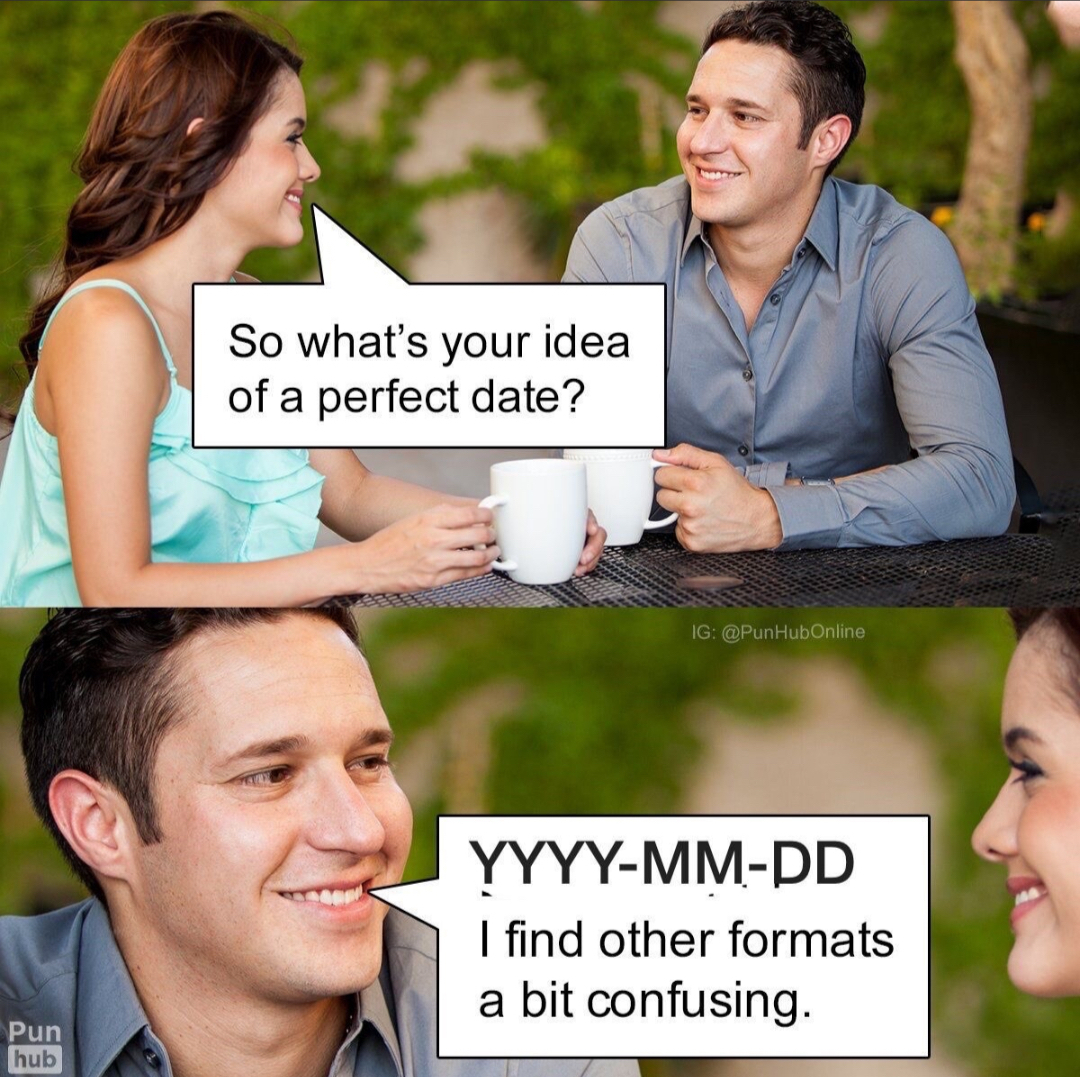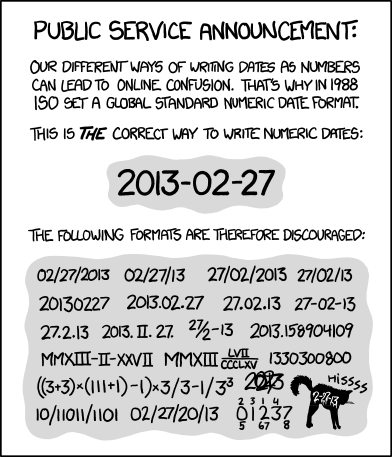The perfect date
Believe me. Everyone has the right to see their idea of a perfect date come to life. Even if their idea of a perfect date is YYYY-MM-DD, the format set out by the ISO 8601 standard to tackle misinterpretation problems that happen when we write dates using numbers.

YYYY-MM-DD is, indeed, my idea of a perfect date. Pun intended.
I live in Brazil, and my country, where we speak Portuguese, goes by the British date format, which is DD/MM/YYYY. The company I work for, on the other hand, is a multinational one, adopting American English as its main language, and its MM/DD/YYYYas the date standard. This could potentially cause problems when talking about, and writing down dates using numbers.
Take 06/09/17, for instance. Does it mean the 9th of June, 2017, or the 6th of September of the same year? During our daily conversations in the company, this kind of confusion is subject to happening because we do write drafts in Portuguese, for example, and sometimes, even local references which are not going to be shared with the general internal public. A second point to consider is the language set to the interface the softwares we use. Mine are all in English, but I have many colleagues who have their software (and date formats) set to Portuguese.
Adopting ISO 8601’s date format is such a clever idea that even Randall Munroe, the brilliant mind behind the excellent xkcd webcomic, translated it to one of his masterpieces:

Adopting ISO 8601’s date format, YYYY-MM-DD, puts an end to any frustrating situation that could be caused by a misunderstanding, especially in a business context. You won’t go to a meeting in the wrong date, or buy those materials when the date is unclear. In ISO 8601’s format, 06/09/17 becomes 2017-09-06, and that’s it.
Need to express dates? Think about this perfect date.